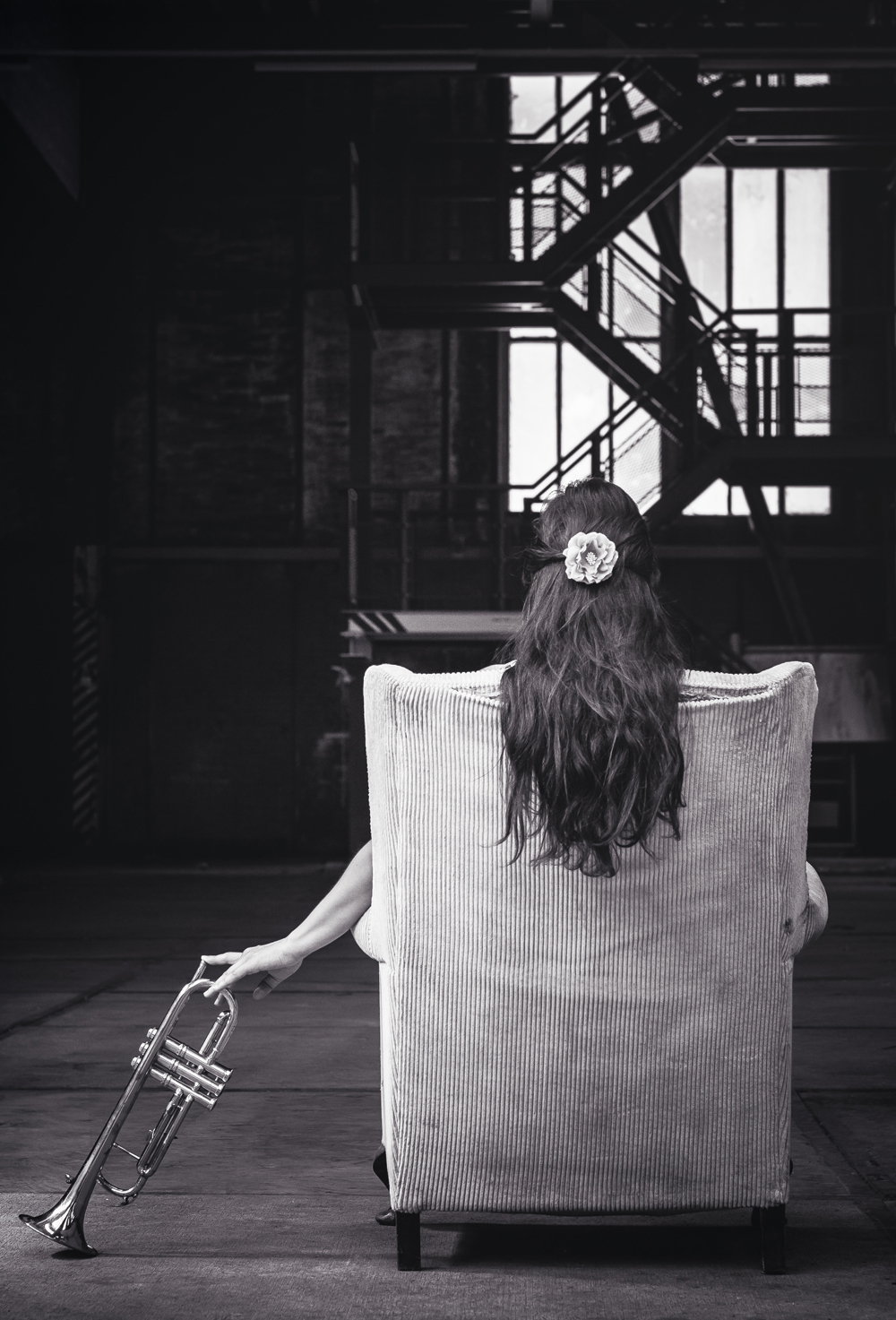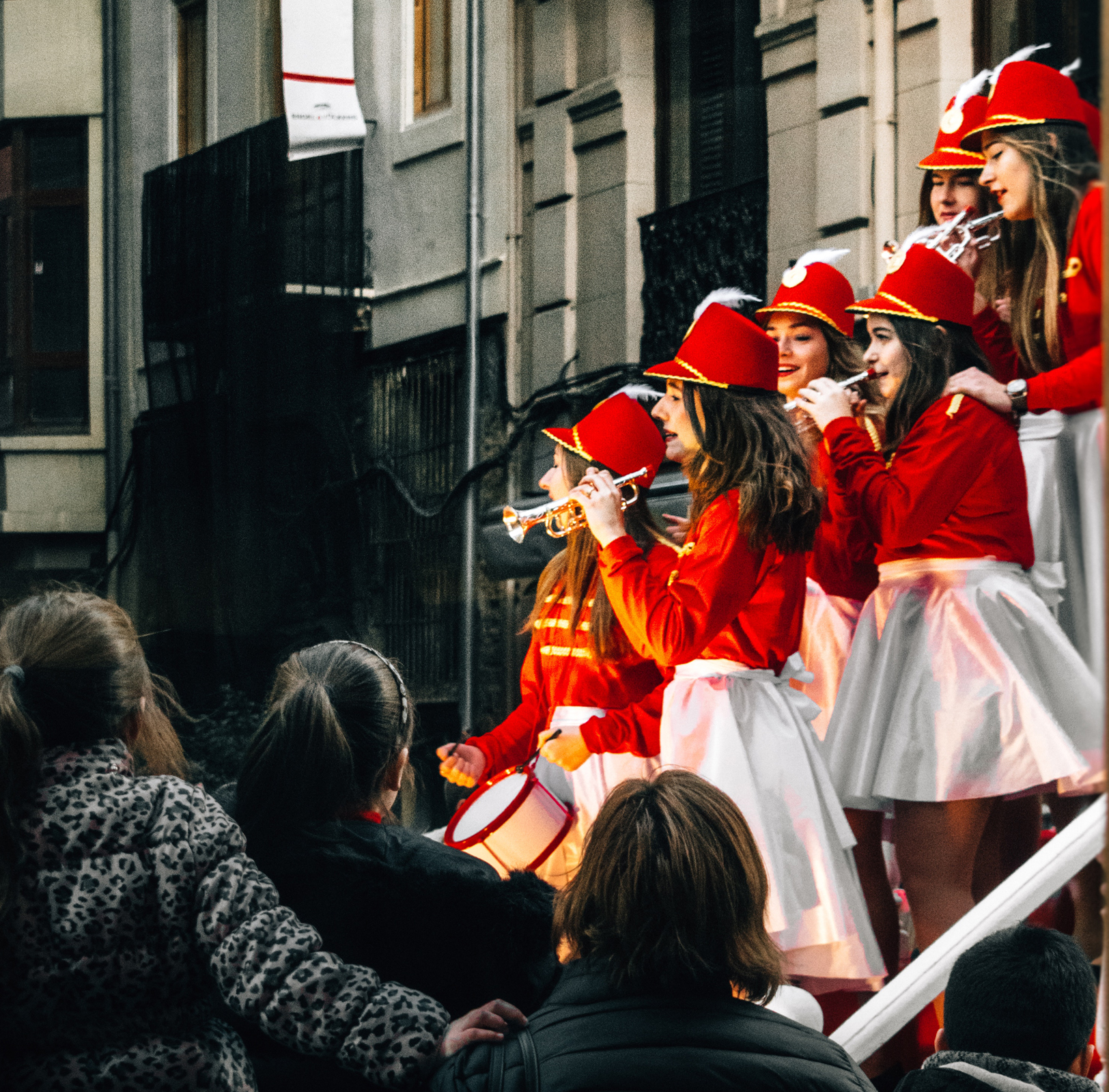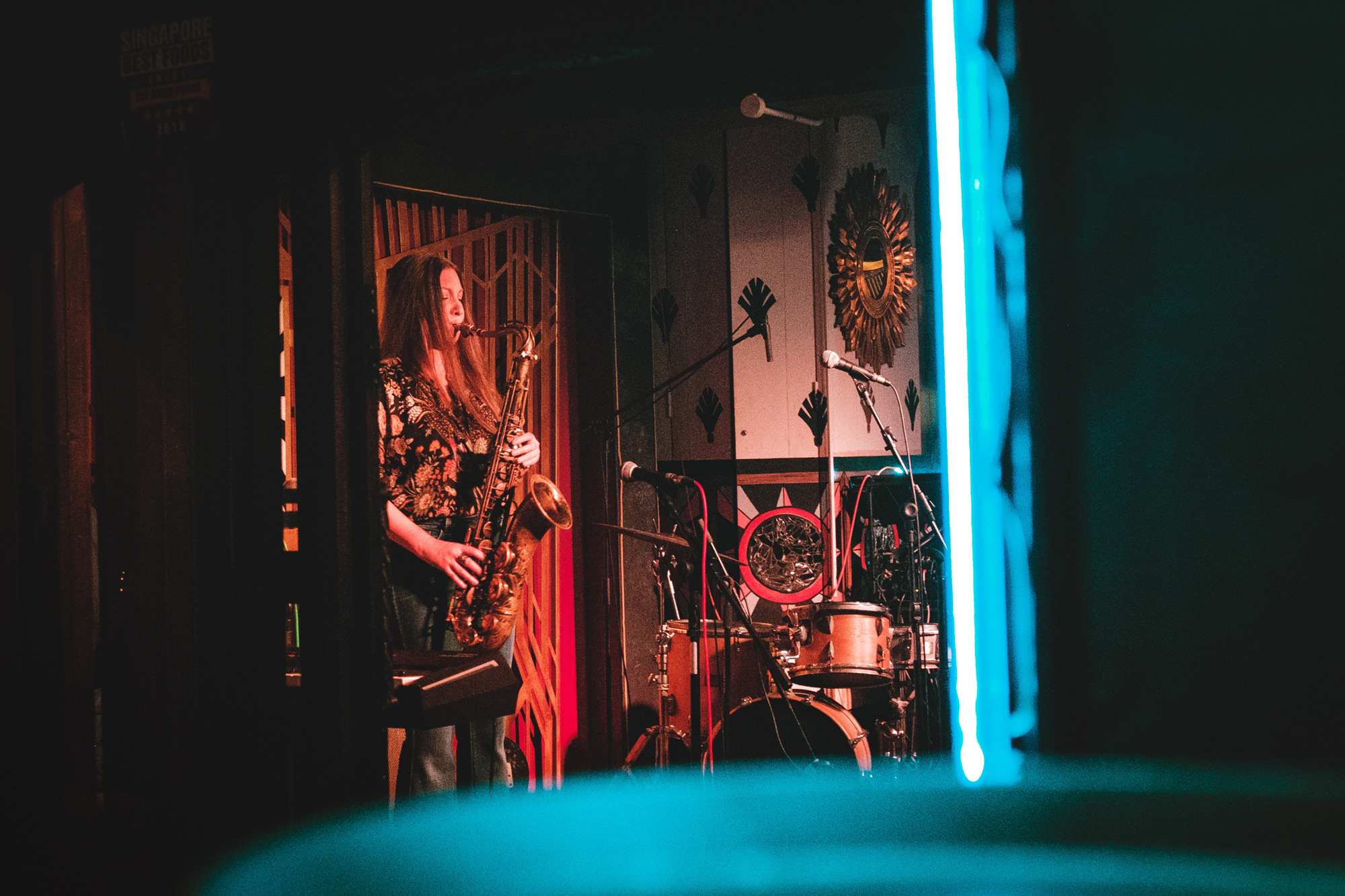Playing Like a Girl: The Problems with Reception of Women in Music
By Carrie Leigh Page with Dana Reason
The year was 1942. In the USA, all-girl orchestras toured extensively, rather like a jazz version of A League of Their Own. Audiences were surprised to find that these girls played “just like men!” As in A League of Their Own, though, when the men returned, women were expected to go back to homemaking or other acceptably female professions. Those women who were leaders found themselves in the background once more. Glenn Miller, Benny Goodman, Fletcher Henderson, and Duke Ellington play large in the bylines of the Swing Era, but women’s bands such as the Sweethearts, the Melodears, and Lil Hardin Armstrong’s “All-Girl Orchestra” disappeared. According to Sherrie Tucker, author of Swing Shift: “All-Girl” Bands of the 1940s, the story lived on in a small way, not in music schools, but in oral histories from women’s jazz festivals and in women’s studies programs, as a sociological phenomenon. One such group that crossed both gender and racial boundaries was the integrated International Sweethearts of Rhythm from Piney Woods, Mississippi, sometimes referred to as the precursors to the Freedom Riders.
How do such important contributors to 20th-century music get lost so easily? This is a question of reception.
Leaving out receptions related to touchdowns and weddings, Merriam-Webster associates the word reception with three synonyms: receipt, response, and admission. Working from that definition, we can perhaps refine the distinct meanings of reception into three musical steps:
Receipt – Getting the music to an audience, which involves access.
Response – Having an audience react to the music and form judgments about its worth.
Admission – Allowing the work to be part of a collective group, canon, or curriculum.
Any new music or new message has problems with reception. Bach, Mozart, and Beethoven all had problems with reception. Even Jesus had problems with reception in his own hometown. Women in particular, though, have problems with reception in music. Lucy Green, music education philosopher and author of Music, Gender, Education, posits that there is a spectrum for acceptance of women in music. A woman singer is accepted because using her body to make music is an extension of her femininity. Put an instrument in her hands or in front of her face, and it interrupts the impression of a woman as either “sexually available or maternally occupied.” The role of composer (and, I would add, producer), the dux femina facti, is the greatest challenge of all according to Green, because it places the woman in control and invites the audience to gaze upon the inner workings of her mind, disembodying the woman entirely.

Photo by Alex via Unsplash
The struggle to actually get our performances and compositions to an audience is particularly cumbersome and well-documented. Critical reviews of works by women can be a mixed bag that is not always based on the work itself. Actually acknowledging the worth of work by women seems painful for some in the establishment. This is true for women across all genres of contemporary music making.
Receipt: Accessing the Audience
The International Alliance for Women in Music (IAWM) exists because women found difficulties with reception, and the problem begins with access. In our last IAWM article, we raised a gruesome specter in the “Editor’s Choice” list of concert and contest band works on the J.W. Pepper website. Just 16 works by women out of more than 1600 made the cut. (For those of you who asked, yes, I counted.) Even when works by women are available, many performing organizations seem to be sticking with men. A Baltimore Symphony Orchestra report by Ricky O’Bannon showed the representation of women composers in major concert halls around the USA to be around 1.3% during the 2016-2017 season, and only 10% of the works by living composers were by women. According to Women’s Philharmonic Advocacy, only about 4% of the time scheduled for this year’s BBC Proms includes music by women composers.
We’ve established the problems for women composers. What about the performers and conductors? Green’s work shows that instrumental performance interrupts the expected roles of women: mother or sex object. Case in point: Most Miss Americas win while competing as dancers or singers. A few exceptions to that include piano, flute, harp, or violin. A notable outlier is Debbye Turner, who won in 1990 with a marimba medley. There is not a winning trumpeter or saxophonist in sight. What about the wildly successful Pietà ensembles of Vivaldi’s time? According to Rosie Dilnot, “They generally performed in the galleries, or cantorie, of the church, by candle light and stationed behind gauze curtains and a metal grille.” That “mystique” of femininity was preserved.
This is why blind auditions are so important to the rise of women in our orchestras. The story of Abbie Conant and her struggle to keep the orchestra job she had already won in Munich was a flashpoint issue in orchestras of the 1990s, and a 2000 Harvard study determined that the screen between jurors and the musicians they are evaluating increased the number of women hired by 30%. A 2014 article from the St. Louis Post-Dispatch highlights that the St. Louis Symphony Orchestra now enjoys a higher proportion of women than men in its ranks, and even the Vienna Philharmonic, which did not admit women until 1997, is likely to equalize its gender imbalance by the next generation. (Pay differences between men and women are a concurrent question to be addressed in these institutions.)
However, a blind audition is probably impossible for conductors, and we still see an enormously thick glass ceiling, or as some sources term it, the “glass podium.” There are a few women making headway, but the number of women conductors remains embarrassingly small. The same BSO report mentioned earlier shows female orchestra musicianship to be around 47% percent in the 85 American Symphony orchestras surveyed, but they are overwhelmingly led by men, with only 8.8% of concerts being conducted by women (5.2% for major orchestras). Linda Hartley shows that the same problem exists in the band world, with similar numbers observed at that Mecca of “brass ceilings”: Midwest Clinic.

Photo by Jānis Skribāns via Unsplash
Though most of the discussion above centers on classical genres, jazz and experimental music programming is similarly restrictive. Biddy Healey commented on the gendering of instruments and the exclusion of women in the “social art” of jazz culture in her essay, “Be a Good Girl or Play Like a Man.” Even the title emphasizes the uncomfortable binary of expectations placed on women.
IAWM board member and musicologist Dana Reason has conducted extensive research in this field. Reason’s 2002 dissertation on experimental women improvisers and jazz programming examined five major jazz festivals and concluded that the festival planners at times seemed locked into gender stereotypes: women pianists and singers were hired for “emotionality or sensuality”; women were most often hired as part of someone else’s group rather than as a leader of a large group, and the same small pool of women was rehired each year, seeming to fulfill an implicit “quota” of gender diversity without more extensive research into or appreciation for the breadth and depth of music making in the larger pool of women jazz artists. Such programming creates “silos within silos”—a small experimental jazz pool, and an even smaller pool of women practicing in that genre, and an infinitely smaller pool of the same female artists getting hired year after year.
In pop music as well, grave differences need redress. The USC Annenberg Inclusion Initiative published a study this year that notes that women make up only 22.4% of artists, 12.3% of songwriters, and 2% of producers. A recent article in Billboard (“Where Are All the Female Music Producers?”) , the response from Ebonie Smith (“Why Are Female Producers Everywhere, Yet So Invisible?), and countless other sources highlight the invisible role of the woman producer. Smith seems to agree with Tricia Rose’s position that the primary factor that hinders growth is the cold reception of female apprentices in the tech-heavy, male-dominated studio culture.
In short, many audiences do not get access to works created by women, whether notated, improvised, or produced.
Response: Recognition and Value
In the Annenberg report, we see that just over 90% of Grammy nominations for popular songs go to men. This lack of critical recognition in the pop industry, combined with the paucity of women awarded prizes and fellowships, emphasizes the invisibility of women across multiple genres.
As Reason points out, we feel the absence of women twofold: they are inadequately programmed and inadequately covered by media:
When coverage of women does occur in magazines or online, the tendency to foreground physical descriptions, make overtly gendered remarks, or advance theories as to the exceptionality of the woman in question. . . can distract readers from the quality of the work and the artistic achievements of experimental women.
In 1903, musicologist Arthur Elson (1873-1940) published a book entitled Woman’s Work in Music, a surprisingly comprehensive and relatively sympathetic tome for its time, detailing the historical roles of women in Western music as performers, patronesses, teachers, researchers, and composers, with a special focus on contemporary women composers at the end of the book. However, despite his own evidence to the contrary (literally over a thousand years of evidence on women making music), Elson still asked if women were “handicapped by the constitution of their sex” and believed that “woman’s work in music will always show more of delicate grace and refinement that man’s, and will be to some extent lacking in the broader effects of strong feeling.”
Elson seemed to claim the ability to distinguish a woman’s compositional product from a man’s, but Ethel Smyth, a contemporary composer about which he writes, was often accused of writing music that was overly masculine, according to researcher Elizabeth Kertesz. In her analysis of critical reception of Smyth’s works, Kertesz explains:
In Smyth’s case, she was accused of being too masculine for demonstrating excessive ambition in her attempts to compose using major forms which employed substantial resources and advanced techniques. Even loud, bold writing, hardly a rarity in Smyth’s style, was seen as masculine, as was technical and formal mastery. The charge of insufficient femininity was levelled at her because some critics considered her expressive range to be too limited at the tender, feminine end of the spectrum. Femininity itself was less clearly defined, including vaguer attributes such as charm, simplicity and grace. (p. 168)
Kertesz organizes the gendered critical reception of Ethel Smyth into three main categories (p. 136):
1. It’s good – for a woman.
2. Comparisons of “feminine” music and “masculine” music.
3. Reflections on the composer herself or the issues of the women’s movement.
Unfortunately, these categories are still applicable to some critical responses to women’s music today, from Vasily Petrenko’s comments about Marin Alsop to that totally weird, “there’s a good reason why there are no great female composers” article from The Spectator . (Don’t miss Emily Hogstad’s snort-laughingly funny response to it!)
Admission: The Musical Canon(s)
Martha Citron’s work, quoted above, is one of several winners of the IAWM’s Pauline Alderman Award. This award specifically honors researchers in the field of women in music with prizes for books, articles, and reference works. The Alderman awards are one of the ways the IAWM is working to encourage the study of women’s music and to help women music makers find responsive and sympathetic critics.
As we can glean from Henry Gates’s quote, whether discussing the musical canon or the literary canon, the idea of change is intimidating to some, and glacially slow to others. The furor over Kendrick Lamar’s Pulitzer-winning DAMN. demonstrates that our musical world is still woefully reluctant to admit newcomers.
The fact is, women have been working in these musical canons alongside men all along. Studying Suor Leonora D’Este’s madrigals and Francesca Caccini’s Ruggiero does not detract from the accomplishments of the Gesualdo or Monteverdi; it enriches our understanding of early Baroque. Playing records of the multitalented Clora Bryant and Ginger Smock does not take anything from Dizzy or Bird. Julia Amanda Perry’s Stabat Mater more than holds up to those by Vivaldi, Poulenc, and Szymanowski and deserves a place in sacred concerts.
In one indicative pop culture canon, the Songwriters Hall of Fame, we find very few female songwriters honored. The first class of more than 118 stylistically divergent inductees included Irving Berlin and Cole Porter alongside John Philip Sousa and William Billings, but only four women: Katherine Lee Bates, Anne Caldwell, Julia Ward Howe, and Carrie Jacobs-Bond. Since then, only 20 women have been added, and, as Lashonda Katrice Bennet points out, only two black female songwriters.
Reason offers the following comments about the process of changing the canon:
Discovering the many voices of contemporary music making by women and allocating space for them is an important step to bridging the discursive gaps in emergent practices involving women. A research and arts presentation model that from the outset, encourages different authenticities, aesthetic practices, and musical languages to co-exist without hierarchical agendas, could emphasize the importance of individual and collective identities and voices of innovative and creative women working with music and sound.
Publishers, concert curators, record labels, and textbook authors—in short, those who in our time define the “canon”—need to take note that women do not exist in a vacuum unto themselves, and neither do the men. We can acknowledge the plurality of experiences of women musicians, AND we can place them within the larger framework of the musical canon.
To lift another quote from Dr. Gates’s article—perhaps a bit out of context, but apropos to the moment—it’s time for the gatekeepers of the canon to “say ‘yes’ to the female within.”

Photo by Christian Chen via Unsplash
Receiving Women in Music: How receptive are you, really?
If you’ve gotten to the end of this article, thank you and congratulations. The International Alliance for Women in Music serves as a platform for many types of music-making women from all over the world and encourages active performance and study of women in music. It is our job to bring up questions that allow all musicians to examine their day-to-day work closely and critically to see if they are truly aligning with ideals of inclusion. Are you giving women access to audiences? Are you giving women adequate coverage and thoughtful criticism? Are you creating space for women in your canon? This list is by no means exhaustive, but it’s a starting place for individuals and organizations to evaluate how receptive they are being to women in music.
1. Take up the #5x5Challenge: Can I name at least five women composers in at least five different eras of music history? Can I name at least five living women composers on five different continents? Can I name five women music producers, or music editors, in five different genres? Once you start working on this, it will be a challenge to stop.
2. Do I program works written by women every year? What is the percentage of time that I actually devote to women composers? Do I segregate these works into a “works by women” concert, or do I give my audience opportunities to hear works by women throughout the year?
3. When I choose teaching materials, do I seek works written or performed by women, including women NOT singing or playing piano?
4. Do I seek out a diverse pool of women of different ethnic and cultural backgrounds practicing in different fields, genres, and subgenres, or do I choose the same performers, lecturers, and composers that are typically on my circuit?
5. When I program women, do I ensure that they are getting adequate and equitable media coverage in our printed and online materials and in press releases?
6. When I talk or write about music created by women, am I gendering my language or focusing on issues tangential or unrelated to the work itself?
7. Do I invite women to join chamber ensembles or to collaborate on projects? Do I only think to invite a woman because I collaborate with her (male) significant other? Do I require a woman to modulate, deny, or sexualize her femininity to be part of a creative space, whether blatantly or subtly?
8. Do I consult with female colleagues regularly about the mission, trajectory, and management of musical organizations with which I am involved? If so, do I enact any of their suggestions?
9. Do I actively create and support opportunities for women to assume leadership roles?
10. Do I work to ensure that women’s compensation is equal to men’s compensation, and distribute opportunities equally among my colleagues and people I may supervise?


